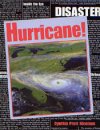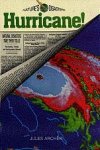Recipe for a Hurricane Additional Information
Share this:
- Share via email (Opens in new window) Email
- Click to share on Facebook (Opens in new window) Facebook
- Click to share on X (Opens in new window) X
- Click to share on Pinterest (Opens in new window) Pinterest
- Click to share on Reddit (Opens in new window) Reddit
- Share to Google Classroom (Opens in new window) Google Classroom
- Click to print (Opens in new window) Print
Information for kids about hurricanes can be found at www.fema.gov/kids/hurr.htm (Federal Emergency Management Agency) and kids.earth.nasa.gov/archive/hurricane/(NASA).
You can learn more about the structure of a hurricane at hurricanes.noaa.gov/prepare/structure.htm (National Oceanic and Atmospheric Administration).
See an animated movie about hurricanes and try a hurricane quiz at www.brainpop.com/science/weatherandclimate/hurricanes/index.weml?&tried_cookie=true (BrainPOP).
The National Weather Service, Tropical Prediction Center, National Hurricane Center has a Web site at www.nhc.noaa.gov/index.shtml(NOAA).
For teachers:
A lesson plan introducing students to the structure of a hurricane can be found at www.nationalgeographic.com/xpeditions/lessons/07/g35/trythishurricane.html
(National Geographic).
A lesson plan on hurricanes and ocean waves is available at school.discovery.com/lessonplans/programs/ragingplanet-hurricane/ (Discovery Channel).
Books recommended by SearchIt!Science:
 |
Hurricane! #&151; Cynthia Pratt Nicolson
Published by Kids Can Press, 2002.
When warm water, moist air, and “spin” from the earth’s rotation come together, conditions are ripe for a hurricane to develop. This book about earth’s most powerful storms discusses why and how hurricanes form, storm surges, the eye of the hurricane, and the Saffir-Simpson hurricane intensity scale. Scientific information is balanced with colorful photographs and stories about Hurricane Hugo, Hurricane Floyd, and Hurricane Andrew, while “You Try It” boxes suggest hurricane-related activities and experiments. Read an interview with Christa Hornbaker, a hurricane hunter with the US Air Force Reserve, learn about how hurricanes are tracked, and discover what you should do if a hurricane is headed your way. |
 |
Hurricanes #&151; Dorothy M. Souza
Published by Carolrhoda Books/Lerner Publishing, 1996.
Native people of the Caribbean feared Huracan, the god of stormy weather. Our word “hurricane” comes from the name of this troublesome god, and when a hurricane warning goes out, people still react with fear. Find out all about hurricanes in this information-packed book: the atmospheric conditions that create hurricanes, how they develop, what makes them move, and when and where they form. Vivid photos depict what hurricanes look like from space and what happens when a hurricane hits land. The book also discusses hurricane forecasting, how the storms are tracked, and hurricane safety advice. |
 |
Hurricane! #&151; Jules Archer
Published by Macmillan Publishing Co., 1991.
The raging winds of a hurricane pull trees from the ground, twist power lines, and turn houses into piles of splinters. These amazing storms form over tropical waters and sometimes move toward land, gathering force as they go. If they unleash their fury on land, they can destroy everything in their path. The photographs, charts, and text in this book explain hurricanes’ formation and the hurricane warning system. |
Power Words
cyclone 1. A large system of winds that rotate around a region of low atmospheric pressure. Winds in a cyclone spiral in toward the center of the system and often bring rain or snow to the region. 2. A powerful storm with strong, spinning winds, such as a hurricane or tornado.
El Niño A period during which the surface water of the eastern Pacific Ocean becomes warmer than usual. The warmer water has fewer nutrients, causing fish and plankton to die because of lack of food. El Niño also causes heavy rains in South America and drought in Australia and Indonesia.
hurricane A powerful tropical storm with heavy rains and winds of more than 74 miles (119 kilometers) per hour. The winds rotate around an area of cal, known as the eye. Hurricanes begin in tropical parts of the Atlantic Ocean and move generally northward.
In a hurricane, warm, moist air rises from the surface of the ocean and circles around a central point called the eye. As the winds get faster, they make tunnels through the thick clouds. Dry air above the storm sinks down into the eye and keeps it free of clouds.
typhoon A hurricane that occurs in the western Pacific Ocean.
Copyright © 2002, 2003 Houghton-Mifflin Company. All rights reserved. Used with permission.
